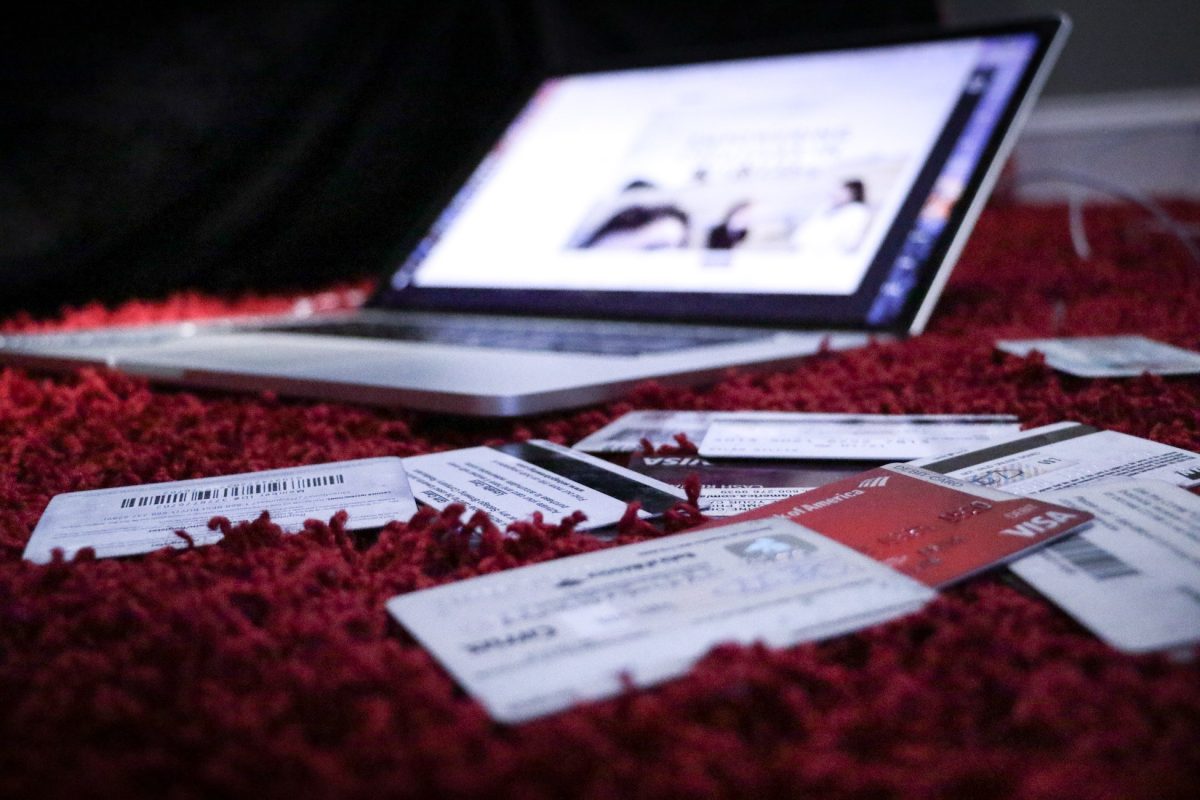You’re so close. You just about managed to get the grades, submitted your college application with 1 day to spare and managed to get accepted into the college half of your friends are going to. So close.
Then it hits you…how the hell are you going to afford to go to college? Your mum and dad work their ass off but you don’t have a secret college fund or a rich creepy uncle.
You’re definitely not alone. Millions of students every year are stuck asking how they are going to pay their college tuition.
Luckily there are quite a few different financial aid options for students. In this article we’re going to look at how a student loan is different from a scholarship.
Quick Links to Useful Sections
How Is A Student Loan Different From A Scholarship Table of Contents
How Is A Student Loan Different From A Scholarship Table of Contents
How Is A Student Loan Different From A Scholarship?
What is a Student Scholarship?
Different Types of Student Loans
How Do I Get a Federal Student Loan?
Why Do People Get Student Loans?
Why Are Student Loans Considered Unsecured?
How Is A Student Loan Different From A Scholarship Table of Contents
How Is A Student Loan Different From A Scholarship?
What is a Student Scholarship?
Different Types of Student Loans
Direct Stafford Subsidized Loans
Direct Stafford Unsubsidized Loan
How Do I Get a Federal Student Loan?
Why Do People Get Student Loans?
Why Are Student Loans Considered Unsecured?
Who Can Qualify for a Student Loan?
How Much Money Can I Borrow With a Federal Student Loan?
How Is A Student Loan Different From A Scholarship?
Ever wondered how a student loan differs from a scholarship? Let’s break it down.
Picture a student loan and a scholarship as two houseguests. A scholarship is the friend who crashes at your place for a while and then leaves without asking for anything in return. A student loan, on the other hand, is more like that roommate who pays their rent, but also racks up a hefty tab on your Netflix account.
With most student loans, the meter starts ticking the moment you receive the funds, accruing interest that you’re responsible for repaying. But scholarships? They’re more like a financial freebie. This ‘free money’ comes from your educational institution or a private organization, and you don’t have to pay it back.
The catch? Well, anyone can apply for a Federal or Private Student Loan. Scholarships, however, are a whole different ballgame. They’re highly competitive and come with strict eligibility and qualification criteria.
So there you have it! The main difference between student loans and scholarships boils down to repayment. One needs to be paid back, usually with interest, while the other is like a gift that keeps on giving.
What is a Student Scholarship?
Scholarships are awards to individual students that are given based on merit or need. They are amazing as they go directly to support the cost of your education and you do not need to pay them back.
It’s important to remember that most student scholarships come with restrictions attached to them, and they are usually quite difficult to apply for.
You can win a scholarship directly from the school you are applying to, or one of the many different private organisations that exist to give scholarships and grants to students.
What is a Student Loan?
If you’re a student or planning on studying, you could be able to get a student loan to support you with your studies. People usually use a student loan to:
- Cover their tuition fees (cost of attendance)
- Pay for school supplies
- Order books for their course
- Pay for their accommodation
- Pay for food expenses
- And “other” student (party) related living expenses
There are both undergraduate and postgraduate student loans.
Some postgraduate student loan deals are set up so that you only start paying back your student loan once you get a job and start earning a certain amount of money. This is called your repayment income threshold.
You’re usually given your student loan in one lump sum at the start of your academic year, it’s always best to pay your tuition and accommodation fees straight away! We all know someone who has been kicked out of college because they haven’t paid their tuition fees.
Now they spend half their day doing dances on TikTok trying to become an “Influencer”.
Different Types of Student Loans
There are two main types of student loans that you can get to help you pay your way through college, these are, Federal Student Loans and Private Student Loans
Federal Student Loans
Federal Student Loans are types of financial aid provided by the Government. They are usually the first place you should start when you’re thinking of getting a loan to help you with your college fees.
There are four main types of Federal Student Loans, Direct Stafford Subsidized Loans, Direct Stafford Unsubsidized Loan, Direct PLUS Loans and Parent PLUS Loans.
Direct Stafford Subsidized Loans
Direct Stafford Subsidized Loans are only given to undergraduate students that need them the most. It’s means tested, which means your family household income among other factors are checked to make sure you are eligible for a Direct Stafford Subsidized Loan.
Direct Stafford Subsidized Loans have a fixed interest rate that is decided by Congress. It’s called a subsidized loan as the Federal Government will pay part of the interest on your loan whilst you’re enrolled as a student, this is called the loan’s “grace period”.
Direct Stafford Unsubsidized Loan
If you’re an undergraduate or postgraduate student, a Direct Stafford Unsubsidized Loan might be perfect for you. It is not a means (needs) tested loan which means the amount of money your family can help you out with isn’t used then a school is considering your eligibility for this loan.
With a Direct Stafford Unsubsidized Loan, interest will start building the moment you get your student loan.
You start repaying your unsubsidized loan when you either:
- Graduate
- Leave school
- The grace period on the loan expires
Direct PLUS Loans
A Direct PLUS Loan is unique as it is a Federal Student Loan that is offered to the biological or adoptive parents of undergraduate students.
This type of Student Loan has a free application process, but all applicants will need to complete a credit check alongside their application. With the credit check on a Direct PLUS Loan your credit score is not being checked, it is used to see if you have bad credit (adverse credit history).
Parent PLUS Loans
A Parent PLUS Loan is pretty similar to a Direct PLUS loan but it is specifically for stepparents of children in alternative living situations.
Private Student Loans
If you can’t get a Federal Student Loan or if it doesn’t cover your full need for financial aid, a private student loan from one of the many private lenders could be useful.
You will usually need to have a good credit score & good credit history to get a private student loan for a financial institution.
In some cases you might need a cosigner to support your private student loan application, this can help you access lower interest rates and a wider range of repayment options from Credit Unions.
It’s a good idea to only take only the amount of loan you need, as you don’t want to spend the next 30 years swimming in a load of student loan debt.
How Do I Get a Federal Student Loan?
Federal Student Loans are offered by the Federal Student Aid Program and the application process is pretty straight forward. You’ll need to complete the FAFSA application (Federal Student Aid), during the process you can also apply for Federal Grants like the Pell grant, institutional aid (scholarships) and state financial aid.
If you’re planning on starting a programme in July the following year, you can apply for a Federal Student Loan in October. The earlier you apply the easier it is to get the most financial aid, some states even have a first-come-first-serve process in place.
Why Do People Get Student Loans?
If you think you’re not going to get scholarships to pay for your college tuition and you don’t come from a super-rich family, a Student Loan may be the only way you can pay your way through school. This is why people get student loans.
People usually use a student loan to:
- Cover their tuition fees,
- Pay for school supplies
- Order books for their course
- Pay for their accommodation
- Pay for food expenses
- And “other” student (party) related expenses
Why Are Student Loans Considered Unsecured?
Student loans are considered unsecured as you usually do not have to provide collateral to get this type of loan. This means that you do not have to secure the loan with your house, car, boat or anything else that you feel is valuable.
Imagine you secure your house against your student loan, struggle to meet the monthly payments and default on your loan. The lender could come and repossess your house.
Who Can Qualify for a Student Loan?
Most people can qualify for either a Federal Student Loan or a private student loan, depending on your financial need. It really depends on whether you are an undergraduate student or postgraduate student.
If you are an undergraduate student who can show that they need subsidized financial aid, you can qualify for the following federal loans: Direct Subsidised Student Loan.
All other students should be able to qualify for a Direct Unsubsidised Student Loan.
For a Federal Student Loan, there are also the following minimum eligibility criteria:
- You must be a US citizen or eligible non-US citizen
- You must have a high school diploma or GED
- You must be accepted into an eligible degree or certification program
How Much Money Can I Borrow With a Federal Student Loan?
If you are an undergraduate student you can borrow between $5,500 and $12,500 in financial aid every year to support you with your studies.
If you are a graduate or professional student you can borrow up to $20,500 in financial aid every year.
Also make sure you look into scholarship providers, scholarship programs, academic excellence programs, pell grants, grants for athletic ability, grants for academic achievements and grants for low-income families before you commit to getting a student loan.













